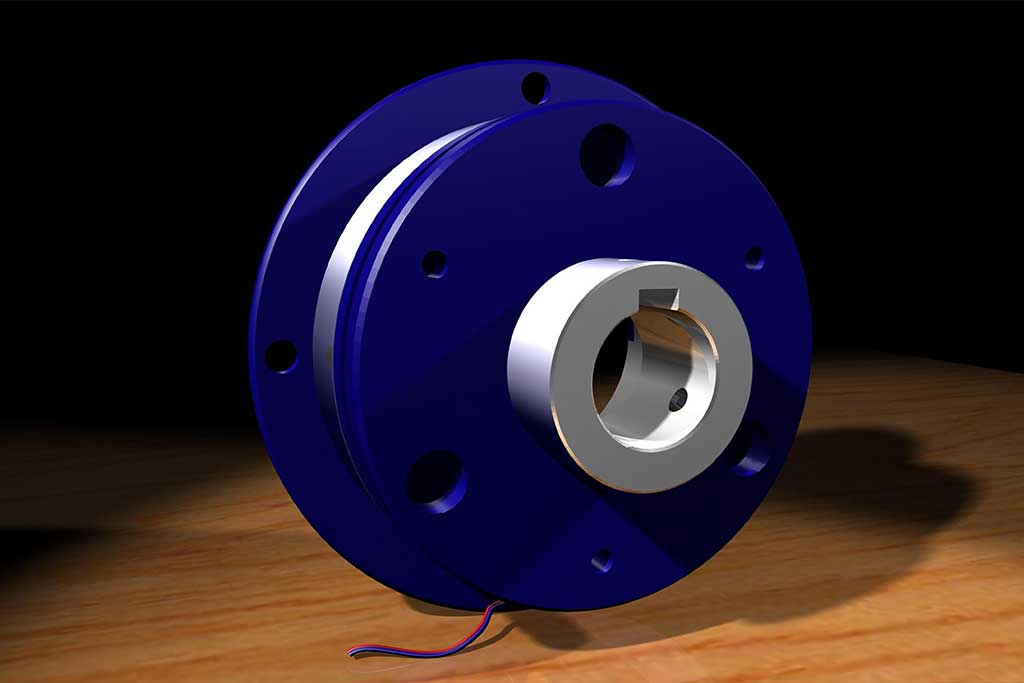Electromagnetic clutches are widely used in various industrial applications to transmit torque and control rotational motion. However, like any mechanical component, electromagnetic clutches can experience issues that affect their performance. In this article, we will explore common problems that arise with electromagnetic clutches and provide troubleshooting tips to identify and resolve these issues effectively.
Electromagnetic Clutches
Before diving into troubleshooting, let’s briefly understand the basic functioning of electromagnetic clutches.
- Principle of Operation: Electromagnetic clutches utilize the magnetic attraction between an electromagnet and a mating friction surface to engage and disengage power transmission. When the electromagnet is energized, it creates a magnetic field, causing the clutch to engage and transmit torque. When the electromagnet is de-energized, the clutch disengages, allowing for free rotation.
- Components of an Electromagnetic Clutch: A typical electromagnetic clutch consists of an electromagnet coil, an armature plate, a field assembly, and a friction plate or disc.
Common Issues with Electromagnetic Clutches

Despite their robust design, electromagnetic clutches can encounter certain problems that hinder their optimal functioning. Let’s explore some of the most common issues:
- Slipping Clutch:
- Symptoms: The clutch fails to transmit torque adequately, resulting in slippage, reduced power transfer, and decreased efficiency.
- Possible Causes: Insufficient electromagnetic force, worn friction surfaces, improper air gap, inadequate voltage supply, or excessive load.
- Clutch Drag:
- Symptoms: The clutch remains partially engaged even when the electromagnet is de-energized, leading to increased wear, excessive heat generation, and potential damage.
- Possible Causes: Contaminated friction surfaces, misalignment, damaged release bearing, or excessive armature plate stiffness.
- Excessive Noise and Vibration:
- Symptoms: Unusual noise, vibration, or rattling during clutch operation.
- Possible Causes: Misalignment, worn or damaged components, loose connections, excessive air gap, or inadequate lubrication.
- Failure to Engage or Disengage:
- Symptoms: The clutch does not engage or disengage properly, resulting in either the inability to transmit torque or difficulty in stopping rotational motion.
- Possible Causes: Insufficient magnetic force, damaged armature plate or friction surfaces, faulty electrical connections, or improper adjustment of the air gap.
- Overheating:
- Symptoms: Excessive heat generation during clutch operation, leading to reduced performance, premature wear, and potential clutch failure.
- Possible Causes: Continuous engagement, excessive slipping, inadequate cooling, or insufficient lubrication.
Troubleshooting Electromagnetic Clutch Issues
To diagnose and resolve issues with electromagnetic clutches, the following troubleshooting steps can be taken:
- Visual Inspection: Inspect the clutch assembly for any visible damage, misalignment, or signs of wear. Check electrical connections for loose or corroded terminals.
- Air Gap Adjustment: Ensure the air gap between the armature plate and field assembly is within the manufacturer’s specified range. Adjust if necessary.
- Friction Surface Evaluation: Examine the friction surfaces for wear, contamination, or glazing. Clean or replace the friction plate as needed.
- Electrical Testing: Measure the voltage supply to the clutch coil and verify it is within the specified range. Check for continuity in the electrical circuit and inspect wiring for any damage.
- Load and Torque Analysis: Evaluate the operating conditions and ensure the clutch is not subjected to excessive loads or torques beyond its design capacity.
- Lubrication and Cooling: Verify that the clutch is adequately lubricated and cooled to prevent overheating. Check for proper lubricant levels and cooling system functionality.
Electromagnetic clutches play a crucial role in various industrial applications, and understanding how to troubleshoot common issues is essential for maintaining optimal performance. By identifying and addressing problems such as slipping, clutch drag, excessive noise, engagement/disengagement failures, or overheating, operators and maintenance personnel can extend the lifespan of electromagnetic clutches and ensure efficient operation.
Remember, if troubleshooting efforts do not yield satisfactory results, consulting the manufacturer’s guidelines or seeking assistance from a qualified technician is recommended. With proper maintenance and prompt troubleshooting, electromagnetic clutches can continue to provide reliable and efficient power transmission in industrial systems.
Summary
Troubleshooting electromagnetic clutches requires a systematic approach to identify and rectify common issues that may arise during their operation. By understanding the symptoms, possible causes, and appropriate troubleshooting steps, operators and maintenance personnel can effectively diagnose and resolve problems such as slipping, clutch drag, noise, engagement/disengagement failures, or overheating. Regular maintenance and adherence to manufacturer guidelines will contribute to the longevity and optimal performance of electromagnetic clutches, ensuring uninterrupted power transmission in industrial applications.